Escape Fires and Healthcare Leadership
Tuesday, July 9th, 2013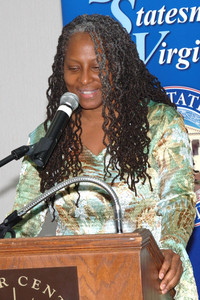 Some say that health outcomes are not keeping pace with the costs of healthcare while this system is by design, more “disease care” than healthcare and prevention. What can be done about an entrenched healthcare system? Dr. Pamela Ross, a featured physician in the movie documentary Escape Fire: The Fight to Rescue American Healthcare, gives an inspiring take on lessons learned. The program was presented on June 12, 2013 and was moderated by SSV President Sue Liberman.
Some say that health outcomes are not keeping pace with the costs of healthcare while this system is by design, more “disease care” than healthcare and prevention. What can be done about an entrenched healthcare system? Dr. Pamela Ross, a featured physician in the movie documentary Escape Fire: The Fight to Rescue American Healthcare, gives an inspiring take on lessons learned. The program was presented on June 12, 2013 and was moderated by SSV President Sue Liberman.
[display_podcast]
Pamela A. Ross, MD, FACEP, is an associate professor of Emergency Medicine and Pediatrics at the University of Virginia Health System, and founding CEO of Holistic Medical Consultants. She bases her holistic medical principles and practice on the belief that there is an unbreakable connection between the mind, body and spirit.
A native of rural Decatur, Tennessee, and her parent’s oldest child, Dr. Ross’ exceptional perceptive skills and mental capabilities were realized at an early age. By the time she reached the fourth grade, she was engaged in various public speaking opportunities through 4-H Club, the nation’s largest youth development organization. Public speaking was a skill that Dr. Ross evidently mastered early, but it was her mother’s illness that sparked her interest and curiosity in the study of medicine. Determined to aid in her mother’s care, Dr. Ross focused her education and career goals on becoming a physician.
Dr. Ross received her BA in Chemistry from the University of Tennessee at Chattanooga, and her MD from Emory University School of Medicine. Her distinguished career is filled with notable highlights including receiving an invitation from President Barack Obama to be present in the White House Rose Garden when he presented “Doctors for Healthcare Reform” to the nation – an event that galvanized the eventual passage of the Affordable Care Act by the United States Congress. Most recently, she is a featured doctor in Escape Fire: The Fight To Rescue American Healthcare, a 2012 Sundance premiere movie documentary that tackles the pressing issue of a badly broken healthcare system.
In her 16+ year tenure at the University of Virginia Health System, Dr. Ross has worn many hats. She has served as division director of the Pediatric Emergency Department, director of the Child Abuse Program, director of the Sexual Assault Nurse Examiner’s Program and director of Quality Improvement. Currently, she serves as ambassador for Sisters Conquering Cancer, a local community grass roots cancer survivor-ship organization; chair of the UVA Cancer Center Minority Recruitment Task Force; and a member of the UVA Compassionate Care Initiative, grounded in compassionate action and empathic leadership. She is also the UVA School of Medicine curriculum thread leader for Complimentary and Alternative Methods (CAM.)
Dr. Ross spends her spare time nurturing her own mental, physical and spiritual well being through reading, meditation, laughter, dance and fellowship in various settings with family and friends.
Program Summary
The intriguing topic addressed by Dr. Pamela Ross was entitled, “Escape Fires & Healthcare Leadership: Lessons I’ve Learned.” Dr. Ross is an associate professor of Emergency Medicine and Pediatrics at the University of Virginia Health System, and founding CEO of Holistic Medical Consultants. Two central themes are that we don’t have a health care system in this country–we have a disease management system, and to maintain a continuous dialogue on health care is essential. In her remarks she incorporated perspectives from a family practice doctor, patients, and that of herself, an emergency department doctor. Due to her mother’s illnesses, she decided at 11 years of age to become a doctor. Her experiences in medical school led to her specialty in emergency medicine. Emergency medicine represents the health care safety net and the only specialty mandated by law to provide health care to people regardless of their ability to pay.
During the course of her remarks, Dr. Ross cited five leadership lessons she has learned: (1) follow your gut and your dream; (2) the Serenity Prayer; (3) never judge a designated leader until you’ve walked a mile in their shoes; (4) the mantra “no money, no mission” should be completely reversed to “no mission, no money”; (5) “I returned, and I saw under the sun, that the race is not to the swift, nor the battle to the strong, neither yet bread to the wise, nor yet riches to men of understanding, nor yet favour to men of skill; but time and chance happens to them all” (Ecclesiastics chapter 9 verse 11).
After engaging in the full practice of medicine for several years, she noticed trends going on in medicine that made her uncomfortable. Patients were losing trust in their doctors, and that she was just a small part of a huge system that is out of control. Decisions made by administrators, policy makers and insurance companies put more distance between the doctor and patient. She learned in a health care marketing class a three-word answer to her question, and it was “follow the money.” For example with investors in pharmaceuticals, if you’re making profits from disease, then what is the motivation to get you to a point where you don’t have to take a whole bunch of pills? The system doesn’t want you to get completely cured, because if you’re completely cured you have no further need of the system.
The above just barely scratches the surface of the points covered by Dr. Ross. To learn how the concept of “escape fire” fits into this discussion on health care, you can listen to the entire presentation via the podcast link above.

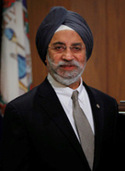 Satyendra Huja is the president of Community Planning Associates, and is also adjunct faculty at the University of Virginia School of Architecture and teaches Urban Planning courses on a regular basis. He was director of Strategic Planning for the City of Charlottesville from 1998 to 2004. Prior to that he was director of Planning and Community Development for the City of Charlottesville for 25 years. He received his Masters Degree in Urban Planning from Michigan State University.
Satyendra Huja is the president of Community Planning Associates, and is also adjunct faculty at the University of Virginia School of Architecture and teaches Urban Planning courses on a regular basis. He was director of Strategic Planning for the City of Charlottesville from 1998 to 2004. Prior to that he was director of Planning and Community Development for the City of Charlottesville for 25 years. He received his Masters Degree in Urban Planning from Michigan State University.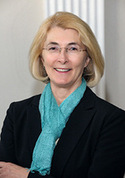 Ann H. Mallek, chairman of the Albemarle County Board of Supervisors, represents the White Hall District. She is an educator and program coordinator for Central Virginia for the Virginia Museum of Natural History. She received her B.A. in Zoology from Connecticut College, New London CT.
Ann H. Mallek, chairman of the Albemarle County Board of Supervisors, represents the White Hall District. She is an educator and program coordinator for Central Virginia for the Virginia Museum of Natural History. She received her B.A. in Zoology from Connecticut College, New London CT.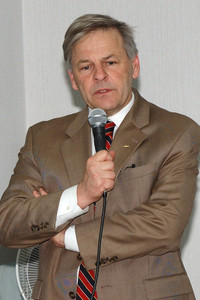 Delegate David Toscano is serving his fourth term in the Virginia General Assembly. He represents the 57th District (Charlottesville and part of Albemarle County) in the House of Delegates and, since 2011, has served as House Democratic Leader.
Delegate David Toscano is serving his fourth term in the Virginia General Assembly. He represents the 57th District (Charlottesville and part of Albemarle County) in the House of Delegates and, since 2011, has served as House Democratic Leader.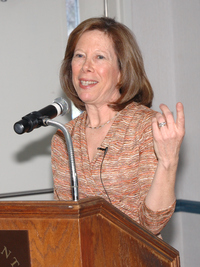
 The 13th Amendment ended slavery in the United States, or did it? In the February 13, 2013 meeting of the Senior Statesmen of Virginia, Pulitzer Prize winner Douglas A. Blackmon talks about what really happened during reconstruction. The program was moderated by SSV vice-president Bob McGrath. Click below to listen to the podcast.
The 13th Amendment ended slavery in the United States, or did it? In the February 13, 2013 meeting of the Senior Statesmen of Virginia, Pulitzer Prize winner Douglas A. Blackmon talks about what really happened during reconstruction. The program was moderated by SSV vice-president Bob McGrath. Click below to listen to the podcast. What role did the human factor play leading to the financial crisis? What are the difficulties of regulating shadow banks? Dr. Richard F. DeMong spoke of how the financial system goes awry when risk goes to zero. Listen to the podcast and you’ll also learn the meaning of “moral hazard” and how it played a role in the financial crises of 2008.
What role did the human factor play leading to the financial crisis? What are the difficulties of regulating shadow banks? Dr. Richard F. DeMong spoke of how the financial system goes awry when risk goes to zero. Listen to the podcast and you’ll also learn the meaning of “moral hazard” and how it played a role in the financial crises of 2008. What does the Pony Express, Miss America, the Philadelphia Quakers Major League baseball team, Chicago’s Iroquois Theater and Tsing Kiang Pu, China, have in common with Charlottesville?
What does the Pony Express, Miss America, the Philadelphia Quakers Major League baseball team, Chicago’s Iroquois Theater and Tsing Kiang Pu, China, have in common with Charlottesville?  New malls are springing up everywhere in both the City of Charlottesville and Albemarle County. Chris Engel and Mark Graham spoke on the effect of these new developments on city and county planning.
New malls are springing up everywhere in both the City of Charlottesville and Albemarle County. Chris Engel and Mark Graham spoke on the effect of these new developments on city and county planning. Chris Engel, CEcD is the director of economic development for the City of Charlottesville. He has a bachelor’s degree in geography from Mary Washington College and a master’s degree in planning from Virginia Commonwealth University. He is also a graduate of the Economic Development Institute at the University of Oklahoma and is a member of the International Economic Development Council (IEDC) where he is a certified economic developer (CEcD). An active civic leader, his current leadership roles include: Chair of the Charlottesville Albemarle Convention and Visitors Bureau, and board positions with the Thomas Jefferson Partnership for Economic Development and Charlottesville Business Innovation Council. He has also been a Junior Achievement instructor and Comfort Zone Camp volunteer.
Chris Engel, CEcD is the director of economic development for the City of Charlottesville. He has a bachelor’s degree in geography from Mary Washington College and a master’s degree in planning from Virginia Commonwealth University. He is also a graduate of the Economic Development Institute at the University of Oklahoma and is a member of the International Economic Development Council (IEDC) where he is a certified economic developer (CEcD). An active civic leader, his current leadership roles include: Chair of the Charlottesville Albemarle Convention and Visitors Bureau, and board positions with the Thomas Jefferson Partnership for Economic Development and Charlottesville Business Innovation Council. He has also been a Junior Achievement instructor and Comfort Zone Camp volunteer.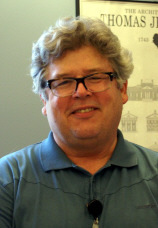 Mark B. Graham, P.E., has been the Director of Community Development for Albemarle County since that department was created in 2004 and was instrumental in making it a “one stop shop” for all development permitting and oversight by the County. He brings a somewhat unique set of skills to this position having worked in both the private and public sector, combined with a back ground that includes both an MBA and almost thirty years as a licensed professional engineer. As the Director of Community Development, Mark has been directly involved with most of the large projects approved in the County since 2000, including: Hollymead Town Center, Stonefield (Albemarle Place), Avon / 5th Street (Wegmans), Biscuit Run, Cascadia, Rivanna Village, and many others.
Mark B. Graham, P.E., has been the Director of Community Development for Albemarle County since that department was created in 2004 and was instrumental in making it a “one stop shop” for all development permitting and oversight by the County. He brings a somewhat unique set of skills to this position having worked in both the private and public sector, combined with a back ground that includes both an MBA and almost thirty years as a licensed professional engineer. As the Director of Community Development, Mark has been directly involved with most of the large projects approved in the County since 2000, including: Hollymead Town Center, Stonefield (Albemarle Place), Avon / 5th Street (Wegmans), Biscuit Run, Cascadia, Rivanna Village, and many others. Carolyn Long Engelhard spoke at the Wednesday, September 12, 2012 meeting of the Senior Statesmen of Virginia. The program was moderated by SSV Vice President Bob McGrath.
Carolyn Long Engelhard spoke at the Wednesday, September 12, 2012 meeting of the Senior Statesmen of Virginia. The program was moderated by SSV Vice President Bob McGrath.
